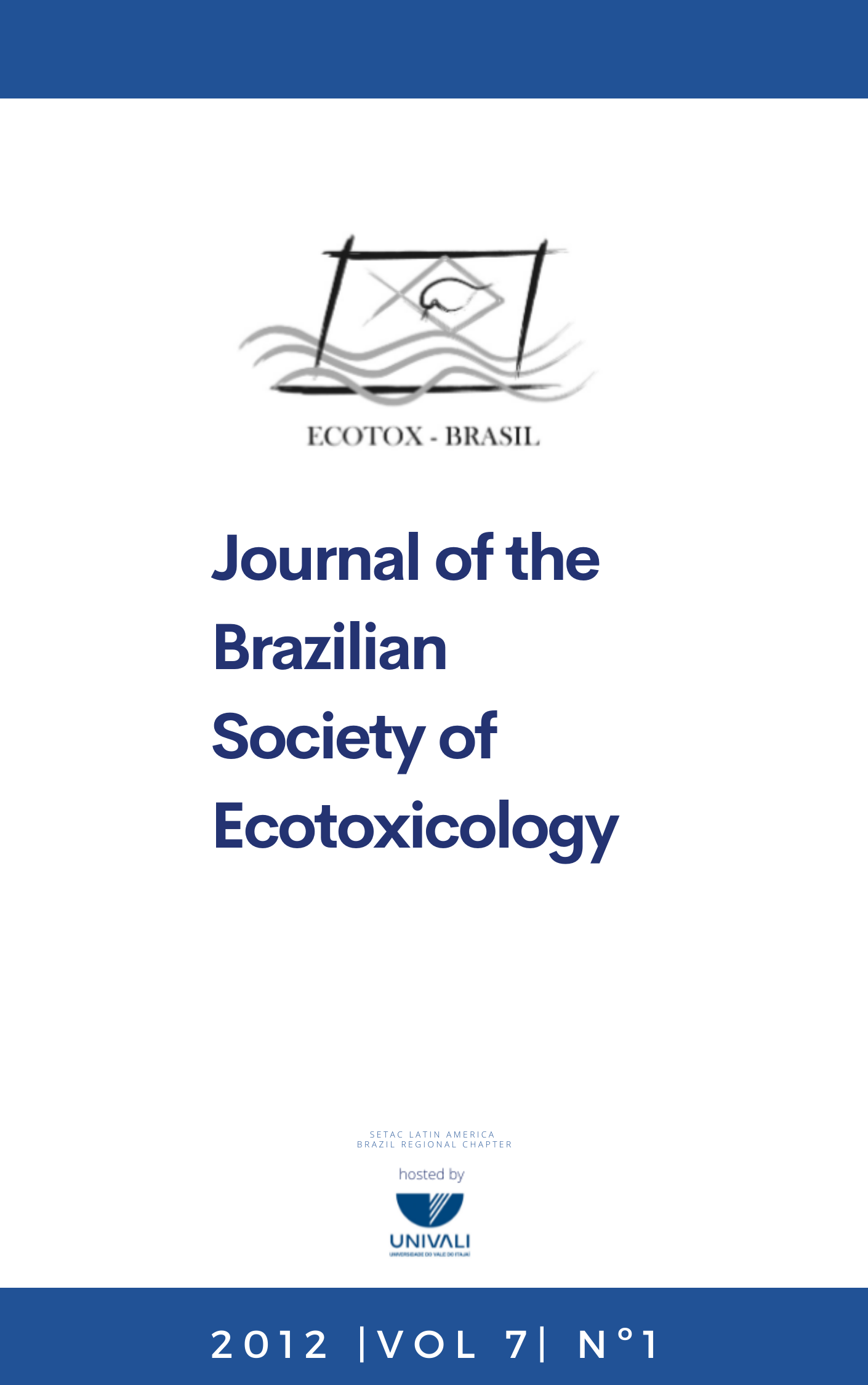Inhibition of the brain cytochrome P450 aromatase isoform expression in Jenynsia multidentata reflects changes in water quality
Abstract
enCytochrome P450 aromatase is the steroidogenic enzyme that catalyzes the conversion of androgens to estrogens. Teleosts express two structurally and functionally different P450 aromatase isoforms, termed Cytochrome 19a1a and Cytochrome 19a1b. The first is preferentially expressed in ovary while the second is constitutively expressed in brain. The aim of the present study was to evaluate changes in cyp19a1b expression in brain of Jenynsia multidentata collected in Suquía river (Córdoba, Argentina) in order to assess if this biological response reflects changes in water quality. For this purpose we first identified cyp19a1b parcial cDNA sequence and adjusted the method to quantify mRNA expression by qRT-PCR (quantitative RT-PCR). Then, water and fish samples were collected in five monitoring stations located along a pollution gradient in Suquía river. The qRT-PCR analysis of female brains reveals that cyp19a1b mRNA levels change as water pollution does, showing the highest levels at both unpolluted and recovered areas, with suppression as pollution increases. Even when cyp19a1b expression in J. multidentata will need further studies, the results here presented indicate that this biological response appear as a promising biomarker of water pollution that may also point out the probable presence of endocrine disruptors.
Keywords: Aromatase; Fish; Real time RT-PCR; Water pollution.
Downloads
Downloads
How to Cite
Issue
Section
License
Copyright © 2006 ECOTOX-Brasil
Copyright notice: It is a condition for publication that manuscripts submitted to this journal have not yet been published and will not be simultaneously submitted or published elsewhere. By submitting a manuscript, the authors agree that copyright for their article is transferred to the Sociedade Brasileira de Ecotoxicologia (ECOTOX-Brasil) if and when the article is accepted for publication. The copyright covers the exclusive rights to reproduce and distribute articles, including reprints, photographic reproductions or any other reproduction of a similar nature, including translations. No part of this publication may be reproduced, stored in a retrieval system or transmitted in any form or by any means, electronic, mechanical, photocopying, recording or otherwise, without permission of the publisher.
Notice: While every effort is made by the EEC, editors and editorial board to see that no inaccurate or misleading data, opinions or statements appear in this journal, they wish to make it clear that the contents of the articles and advertisements published herein are the sole responsibility of the contributors or advertisers concerned. Accordingly, the EEC, the editorial board and editors and their respective employees, officers and agents accept no responsibility or liability whatsoever for the consequences of any inaccurate or misleading data, opinion or statement.




